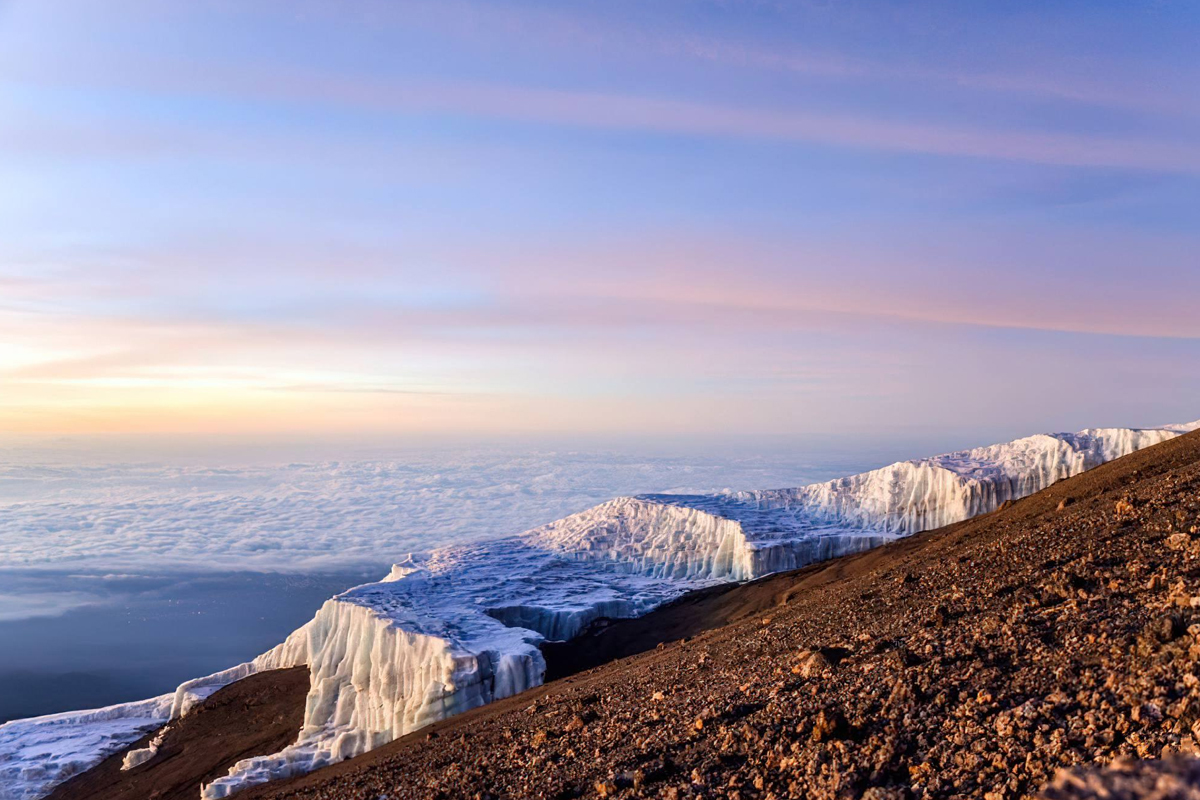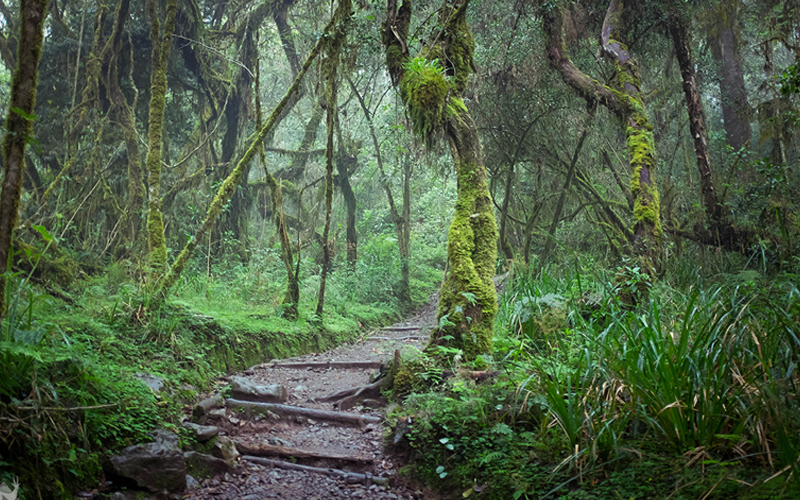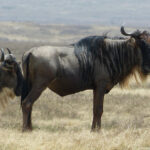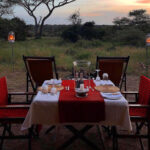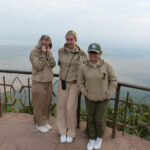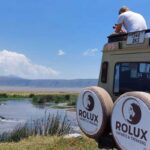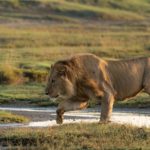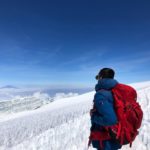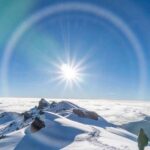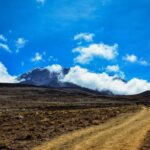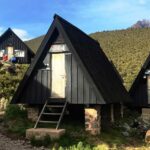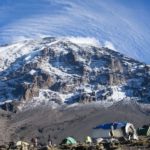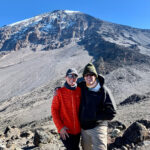Mount Kilimanjaro, Africa’s highest peak, is a beacon for adventurers and nature lovers. This majestic mountain offers more than just the challenge of reaching its summit; it provides a journey through diverse ecosystems and awe-inspiring landscapes. From lush rainforests to arctic-like conditions, the scenic views of Mount Kilimanjaro are nothing short of spectacular. This article takes you through the breathtaking vistas and unique experiences that await those who venture onto this iconic mountain.
The Base: Lush Rainforests
As you begin your ascent of Mount Kilimanjaro, the journey starts in the lush, green rainforests that blanket the mountain’s lower slopes. This verdant environment is teeming with life, offering a stark contrast to the arid landscapes that lie ahead. The forest is home to a variety of wildlife, including colobus monkeys, elephants, and a plethora of bird species. The dense canopy and vibrant flora provide a picturesque introduction to the mountain’s diverse ecosystems.
The Montane Forest Zone
Climbing higher, you enter the montane forest zone. This area is characterized by towering trees, thick underbrush, and a cooler climate. The air is filled with the sounds of chirping birds and rustling leaves. As the trail winds through this dense forest, you’ll encounter clear streams and waterfalls, creating a serene atmosphere. The changing light as it filters through the canopy adds a magical quality to the hike, making it a favorite among photographers.
The Heather and Moorland Zone
Emerging from the montane forest, trekkers find themselves in the heather and moorland zone. This region is marked by rolling hills covered in heather, giant groundsels, and lobelias. The landscape opens up, providing expansive views of the surrounding valleys and the peaks above. The vegetation here is adapted to the cooler, drier conditions, creating a unique and otherworldly environment. The vibrant colors of the flora and the dramatic cloud formations make this zone particularly photogenic.
The Alpine Desert Zone
Further up the mountain, the environment shifts dramatically to the alpine desert zone. This barren landscape is characterized by rocky terrain, sparse vegetation, and striking geological formations. The air becomes thinner and drier, and the temperatures can fluctuate wildly between day and night. Despite its harsh conditions, the alpine desert offers some of the most stunning views on the mountain. The clear skies provide an unobstructed view of the summit, and the lack of vegetation highlights the rugged beauty of the rocky slopes.
The Summit: Arctic Conditions
Reaching the summit of Mount Kilimanjaro, you are greeted by an arctic-like environment. The temperature drops significantly, and the ground is often covered in snow and ice. The views from the top are nothing short of breathtaking. On a clear day, you can see for miles in every direction, taking in the vastness of the African plains below. The sense of achievement combined with the stunning panorama makes the summit experience unforgettable.
Uhuru Peak: The Roof of Africa
Uhuru Peak, the highest point on Mount Kilimanjaro, stands at 5,895 meters (19,341 feet). The journey to the peak is challenging but immensely rewarding. From this vantage point, climbers can witness the curvature of the earth and the spectacular sunrise over the African continent. The glaciers and ice fields at the summit add to the surreal beauty of the landscape. Standing at Uhuru Peak, you truly feel on top of the world.
The Crater: A Unique Geological Feature
One of the lesser-known highlights of Mount Kilimanjaro is its volcanic crater. The Reusch Crater, located near the summit, offers a unique geological experience. The crater is home to the ash pit, a remnant of the mountain’s volcanic activity. The stark contrast between the dark ash and the white snow creates a dramatic and otherworldly landscape. Exploring the crater provides a deeper understanding of the mountain’s volcanic origins and adds an extra layer of adventure to the climb.
The Descent: A New Perspective
Descending Mount Kilimanjaro provides an entirely new perspective on the landscapes you pass through on the ascent. The descent is quicker and allows you to appreciate the changing environments from a different angle. The views are equally stunning, and the sense of accomplishment enhances the beauty of the surroundings. As you make your way down, you can reflect on the journey and the incredible vistas that have marked each stage of the climb.
Wildlife Encounters
Mount Kilimanjaro is not just about the scenic views; it’s also a haven for wildlife enthusiasts. The diverse habitats support a variety of species, and wildlife encounters are common throughout the trek. From the elusive leopards in the forest zones to the endemic species found only on the mountain, the opportunity to observe wildlife in their natural environment adds to the overall experience. Birdwatchers, in particular, will find the mountain a paradise, with numerous species to spot along the way.
Cultural Insights
The journey up Mount Kilimanjaro is also an opportunity to learn about the local cultures. The mountain is of great significance to the indigenous Chagga people, and their rich cultural heritage is intertwined with the landscape. Many trekking companies employ local guides and porters, providing insight into the traditions and way of life of the people who call the mountain home. Engaging with the local communities and learning about their customs adds a meaningful cultural dimension to the adventure.
Photography Tips
Capturing the beauty of Mount Kilimanjaro requires some preparation and skill. Here are a few tips for getting the best shots:
- Plan for the Golden Hours: Sunrise and sunset offer the most dramatic lighting. Aim to capture your photos during these times for the best results.
- Use a Polarizing Filter: This helps to reduce glare and enhance the colors in your photos, particularly in the bright, sunny conditions on the mountain.
- Keep Your Equipment Safe: The conditions on Kilimanjaro can be harsh. Ensure your camera gear is protected from dust, moisture, and cold temperatures.
- Capture the Journey: Don’t just focus on the summit. The entire trek offers incredible photo opportunities, from the dense forests to the barren alpine desert.
Mount Kilimanjaro is more than just a climb; it’s a journey through some of the most stunning and diverse landscapes on the planet. The scenic views at each stage of the ascent offer a unique glimpse into the beauty of this iconic mountain. Whether you are an experienced climber or a first-time trekker, the experience of witnessing the scenic views of Mount Kilimanjaro will stay with you forever. From the lush rainforests to the icy summit, every step of the journey is filled with natural beauty and a sense of adventure.
FAQs
1. What is the best time to climb Mount Kilimanjaro? The best time to climb Mount Kilimanjaro is during the dry seasons, from January to March and from June to October. These months offer the most favorable weather conditions and clearer views.
2. How difficult is the climb? Climbing Mount Kilimanjaro is challenging due to the high altitude, but it does not require technical climbing skills. Proper preparation, acclimatization, and physical fitness are key to a successful ascent.
3. What should I pack for the climb? Essential items include layered clothing, sturdy hiking boots, a warm sleeping bag, a backpack, a headlamp, trekking poles, and a first-aid kit. Proper gear is crucial for a comfortable and safe climb.
4. Can beginners climb Mount Kilimanjaro? Yes, beginners can climb Mount Kilimanjaro with the right preparation and determination. Many first-time climbers successfully reach the summit each year. It’s important to choose a route that allows for adequate acclimatization.
5. How long does it take to climb Mount Kilimanjaro? The duration of the climb depends on the route chosen. Most routes take between 5 to 9 days to complete. Longer routes offer better acclimatization and increase the chances of reaching the summit.
For a luxurious and well-prepared Tanzanian adventure, explore the following topics on our page:
- Tanzania Honeymoon Safari
- Tanzania Luxury Holiday
- Tanzania Travel
- Safari Packing Gear List
- Safety Guidelines
Visit our page for detailed information and tips to plan and enjoy your perfect Tanzanian experience.

